Photos: California desert gains three national monuments
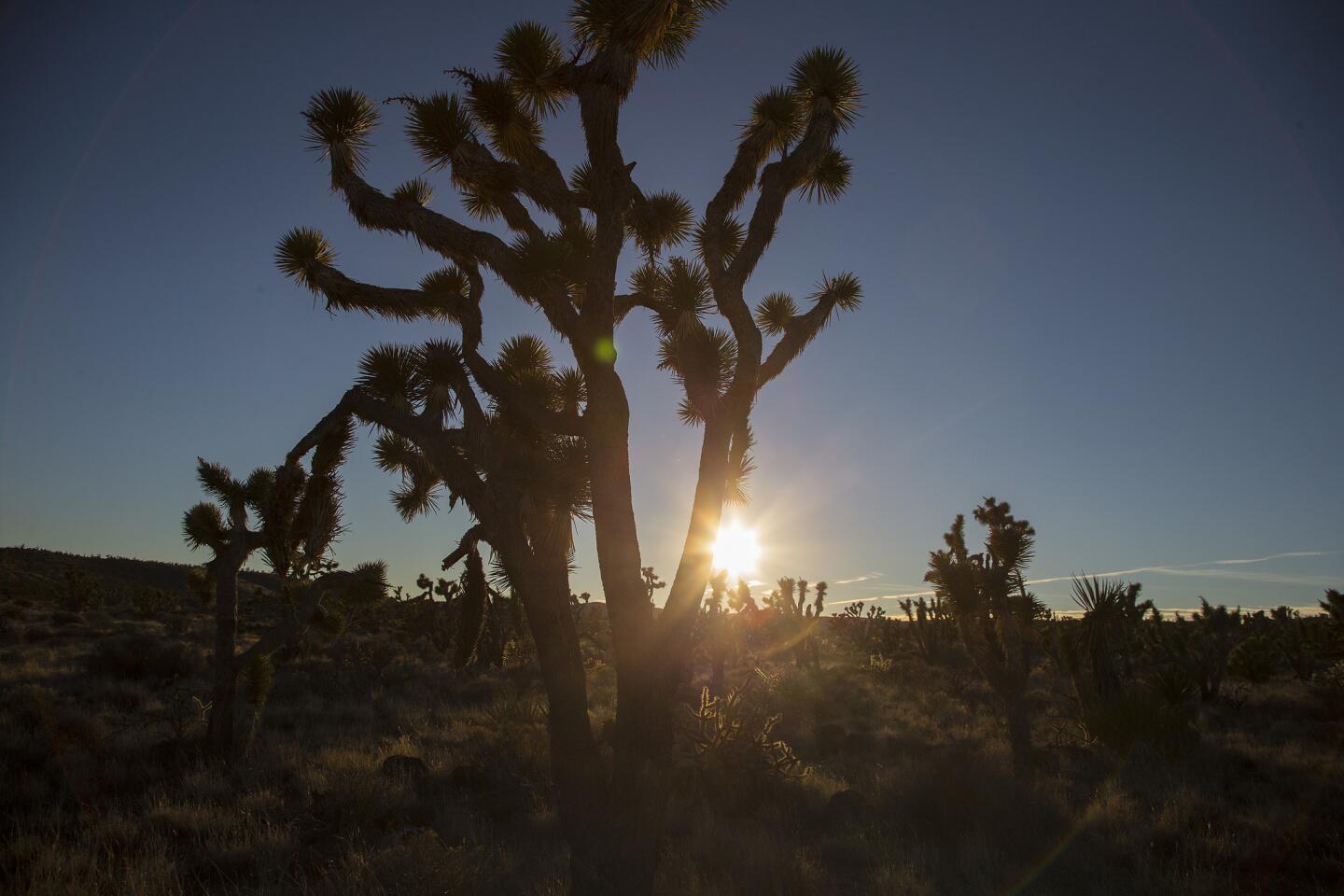
A Joshua tree is backlighted by the setting sun in the Mojave Desert. Concern over the long-term health of the deceptively delicate terrain spurred President Obama to designate the Mojave Trails, Sand to Snow and Castle Mountains monuments under the 1906 Antiquities Act.
(Gina Ferazzi / Los Angeles Times)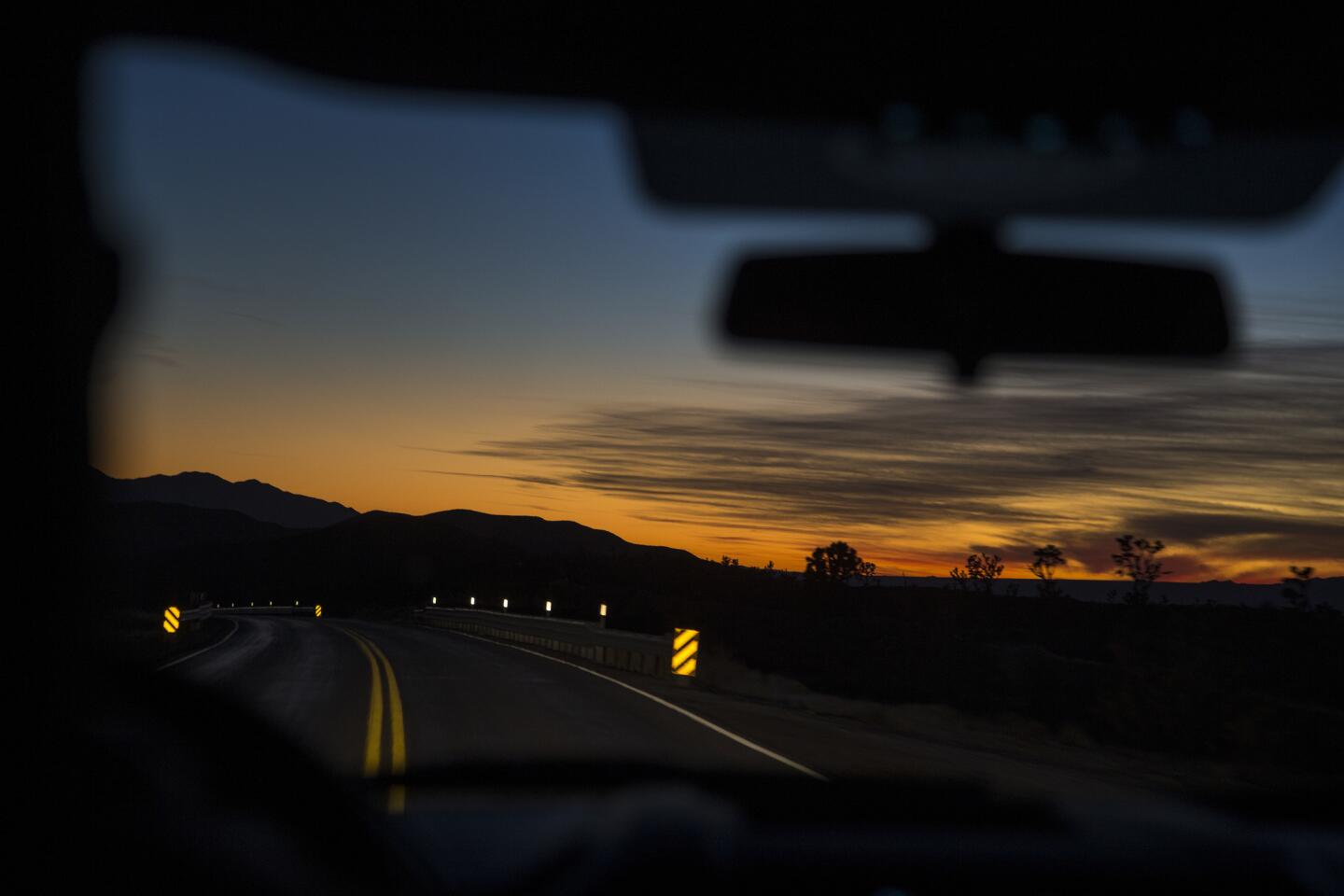
David Lamfrom, director of California desert and wildlife programs for the National Parks Conservation Assn., drives toward the sunset near newly designated national monument land about 10 miles north of Nipton, Calif., in the Mojave Desert. Lamfrom worked for years to get this land protected.
(Gina Ferazzi / Los Angeles Times)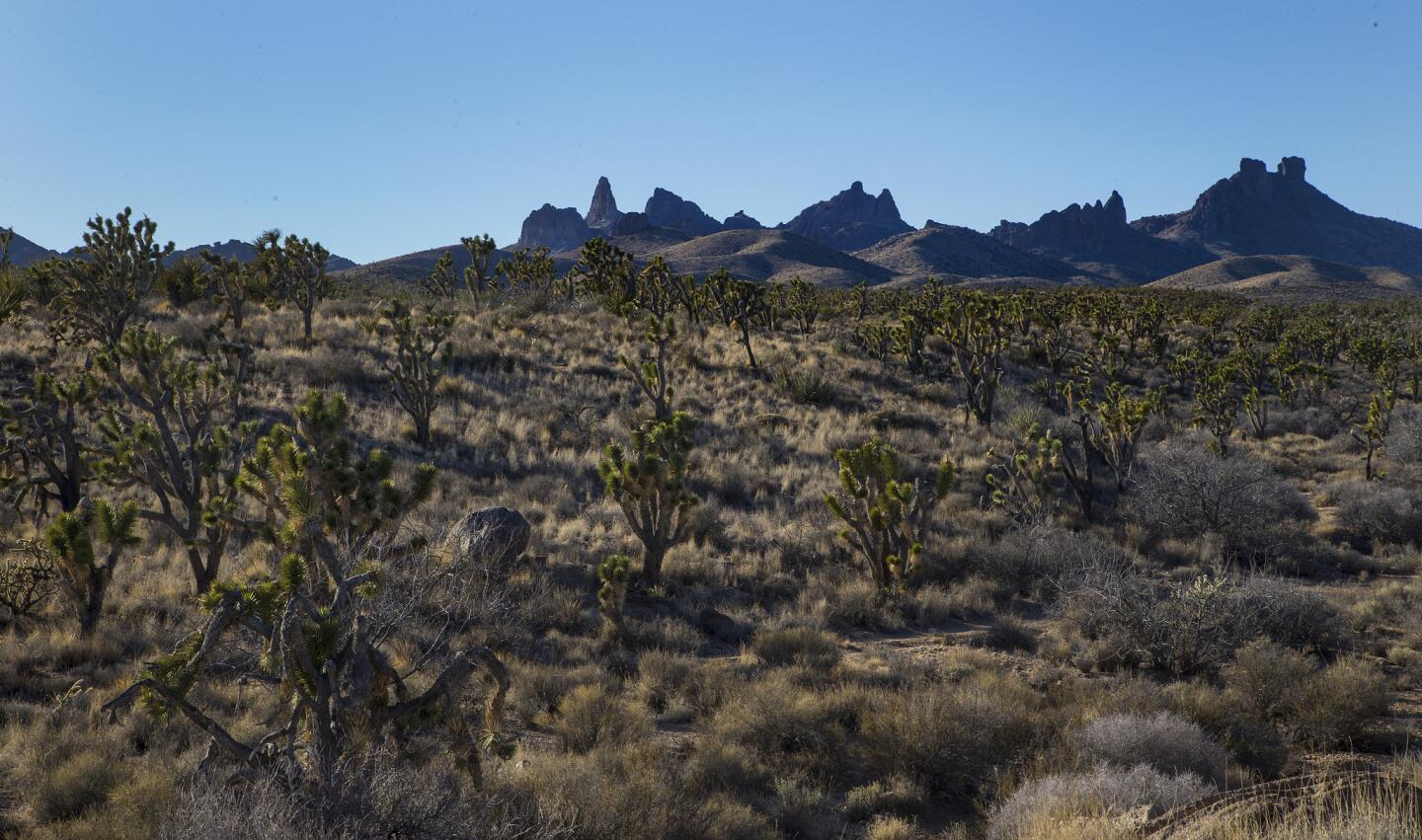
Native grasslands mingle with Joshua trees in the Mojave Desert, land which President Obama has designated as a national monument.
(Gina Ferazzi / Los Angeles Times)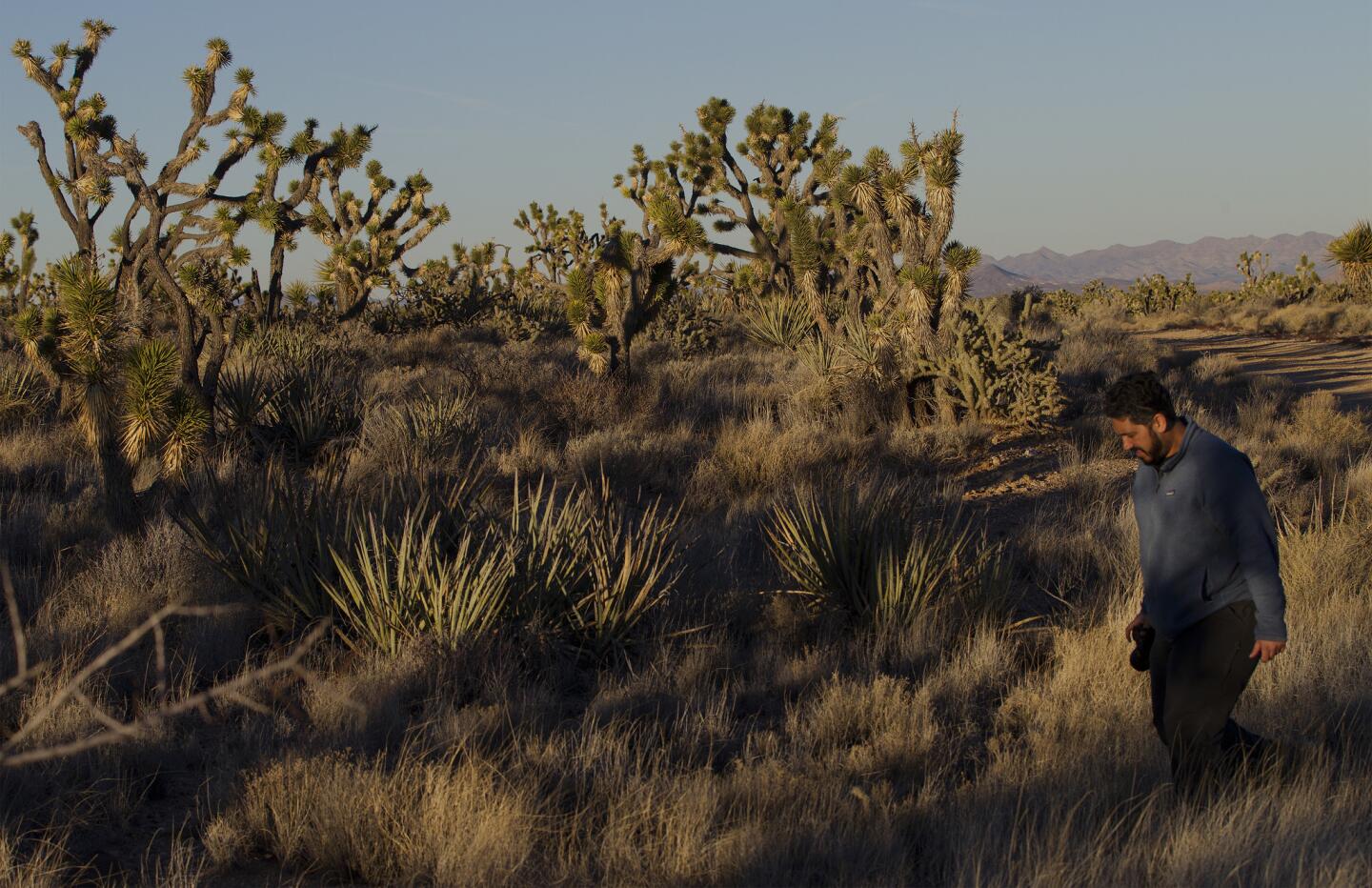
David Lamfrom walks through the native grasslands in the Mojave Desert. He calls the Castle Mountains, now protected as a national monument, “one of California’s greatest scenic attractions.”
(Gina Ferazzi / Los Angeles Times)Advertisement
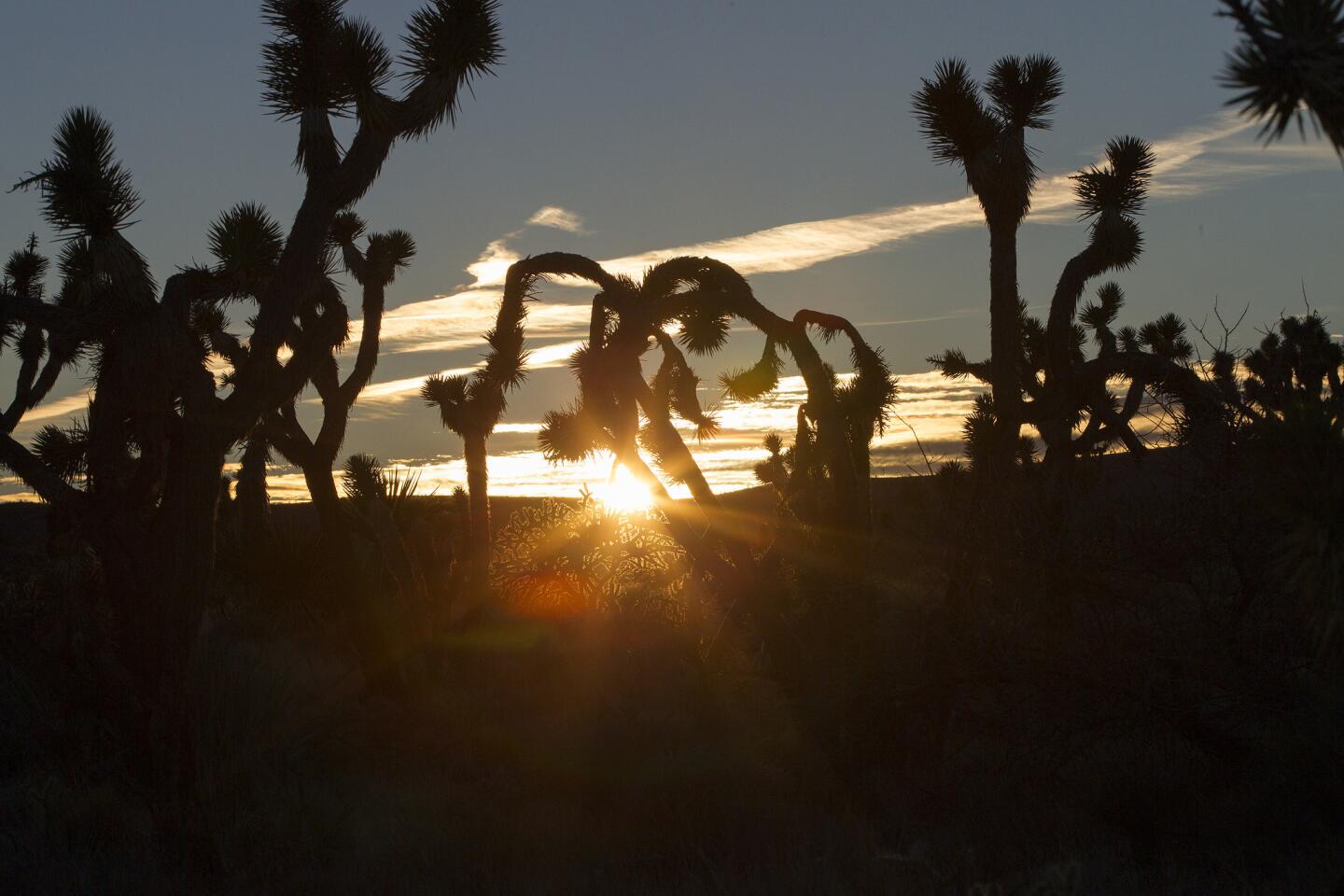
Joshua trees are silhouetted against the setting sun in the Mojave Desert, land which President Obama has designated as a national monument near the Castle Mountains. The three new national monuments sprawl across 1.5 million acres of terrain that includes Joshua trees and rare desert grasslands.
(Gina Ferazzi / Los Angeles Times)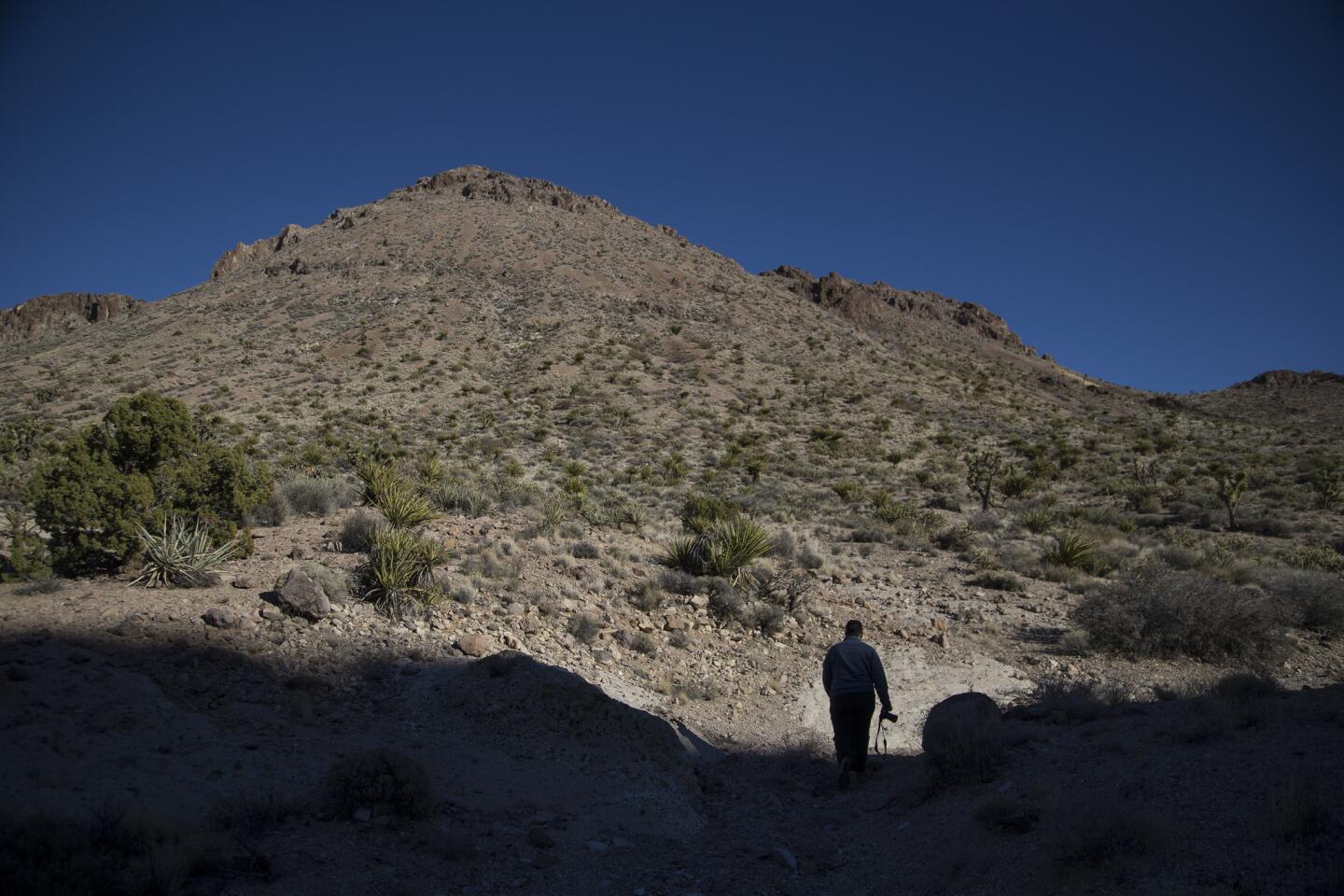
David Lamfrom walks out of the shadows in the Mojave Desert. “A few centuries ago, Mexican wolves chased pronghorn antelope across this very landscape,” he said.
(Gina Ferazzi / Los Angeles Times)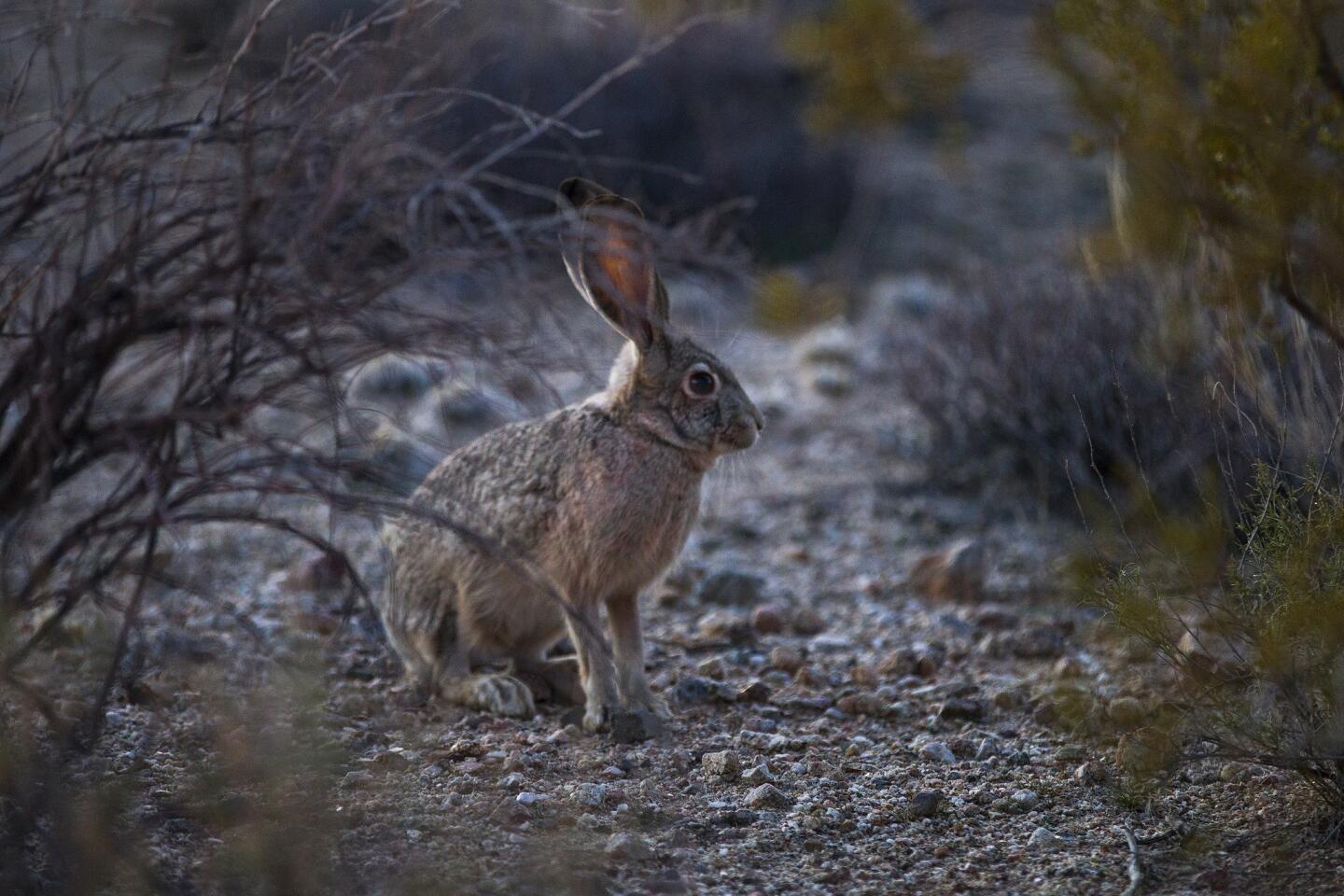
A native jackrabbit pauses in Mojave Desert land that has been designated as a national monument. The designations preserve unique natural and cultural resources and enhance the region’s economic activity.
(Gina Ferazzi / Los Angeles Times)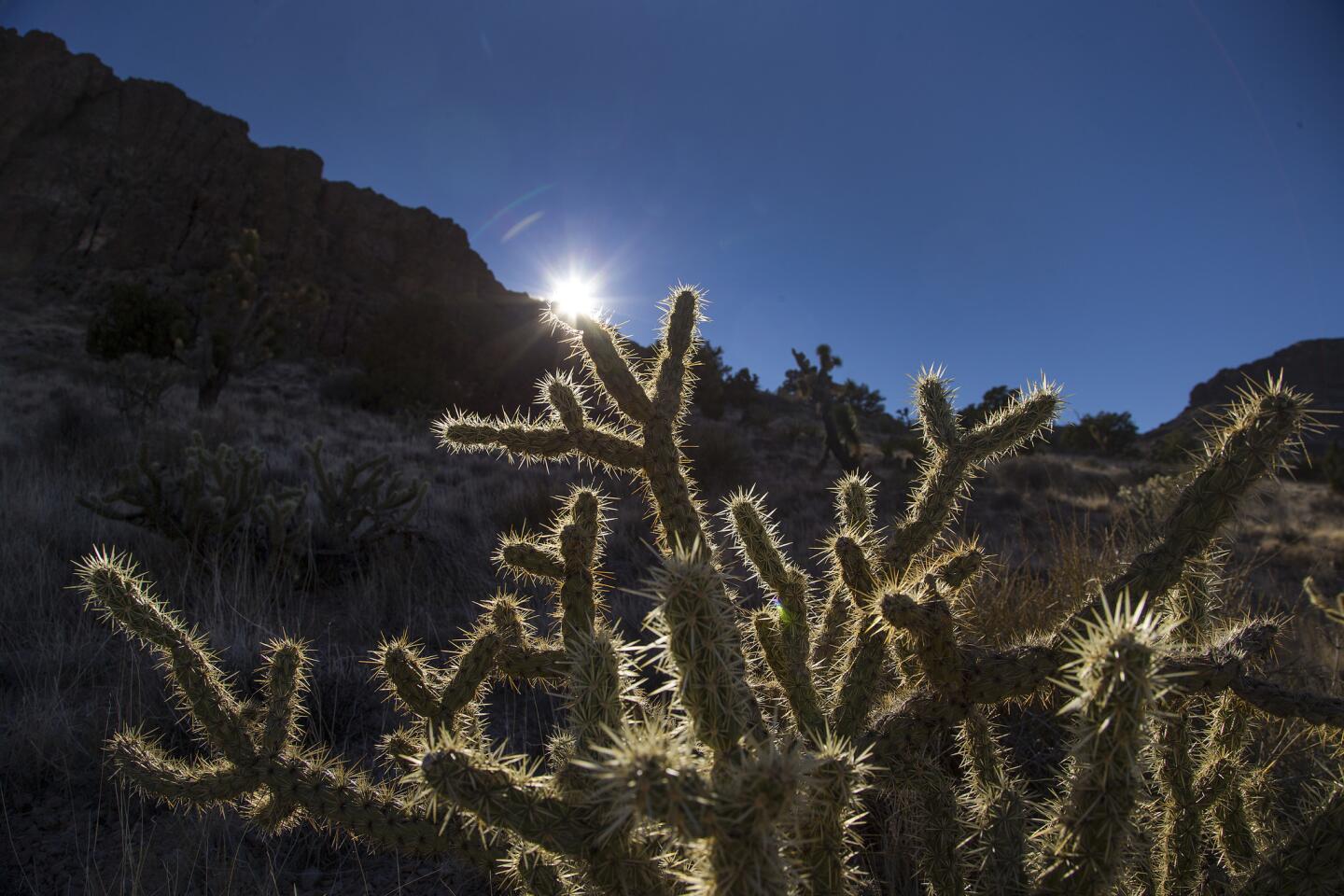
A cholla cactus is backlighted by the setting sun in the Mojave Desert. “This is the pinnacle of a 15-year effort to preserve the physical heart of the Mojave Desert for conservation, recreation and unparalleled inspiration,” said David Myers, executive director of the Wildlands Conservancy.
(Gina Ferazzi / Los Angeles Times)
Advertisement
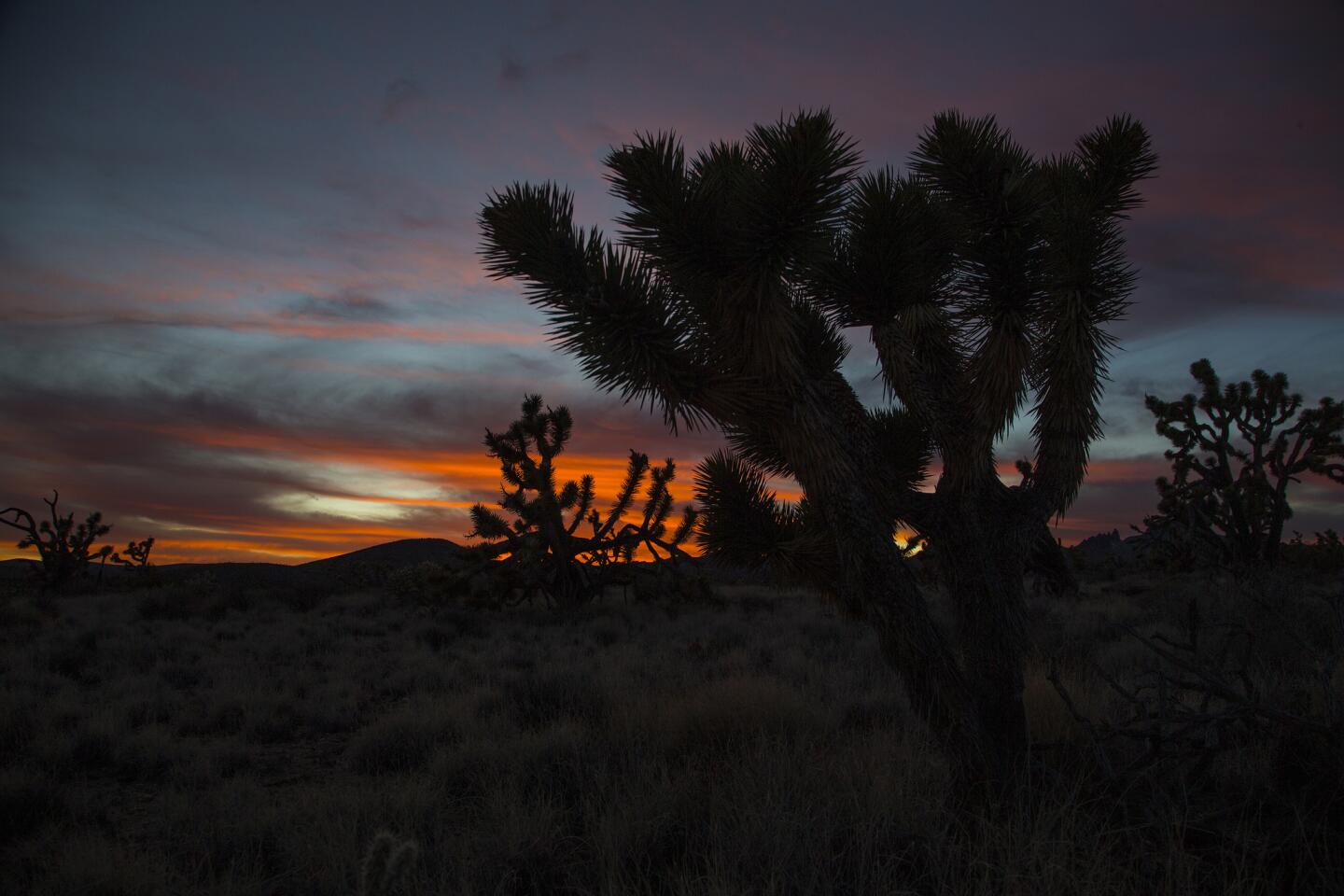
Dusks settles in over the desert landscape. The monuments designed by the president embrace volcanic spires, dunes, ribbons of wetlands wedged between steep canyon walls, grasslands, Joshua tree forests, historic roadways and petroglyphs. They are home to species that thrive despite withering heat and scant rainfall: bighorn sheep, tortoises, fringe-toed lizards and more than 250 types of birds.
(Gina Ferazzi / Los Angeles Times)



